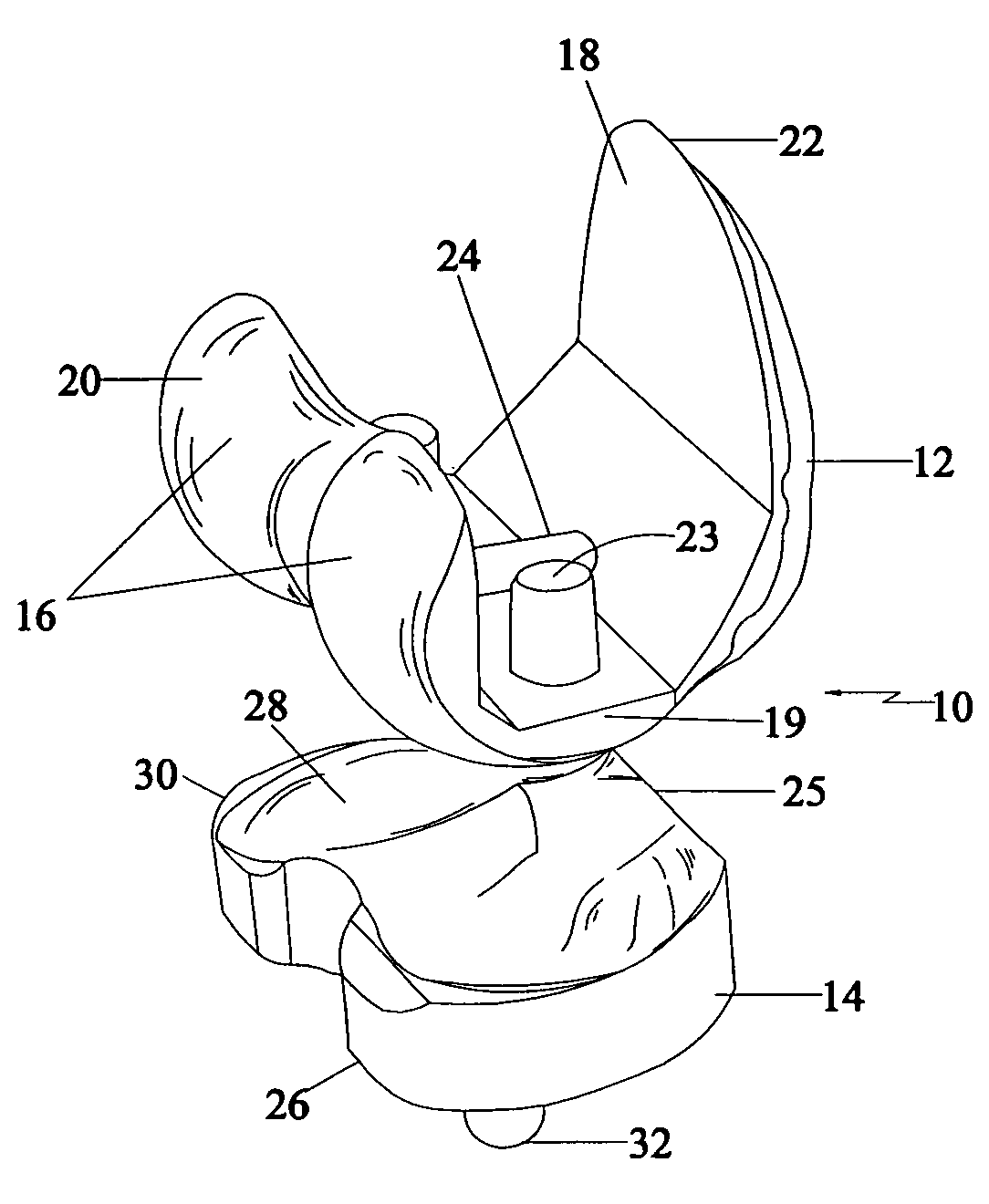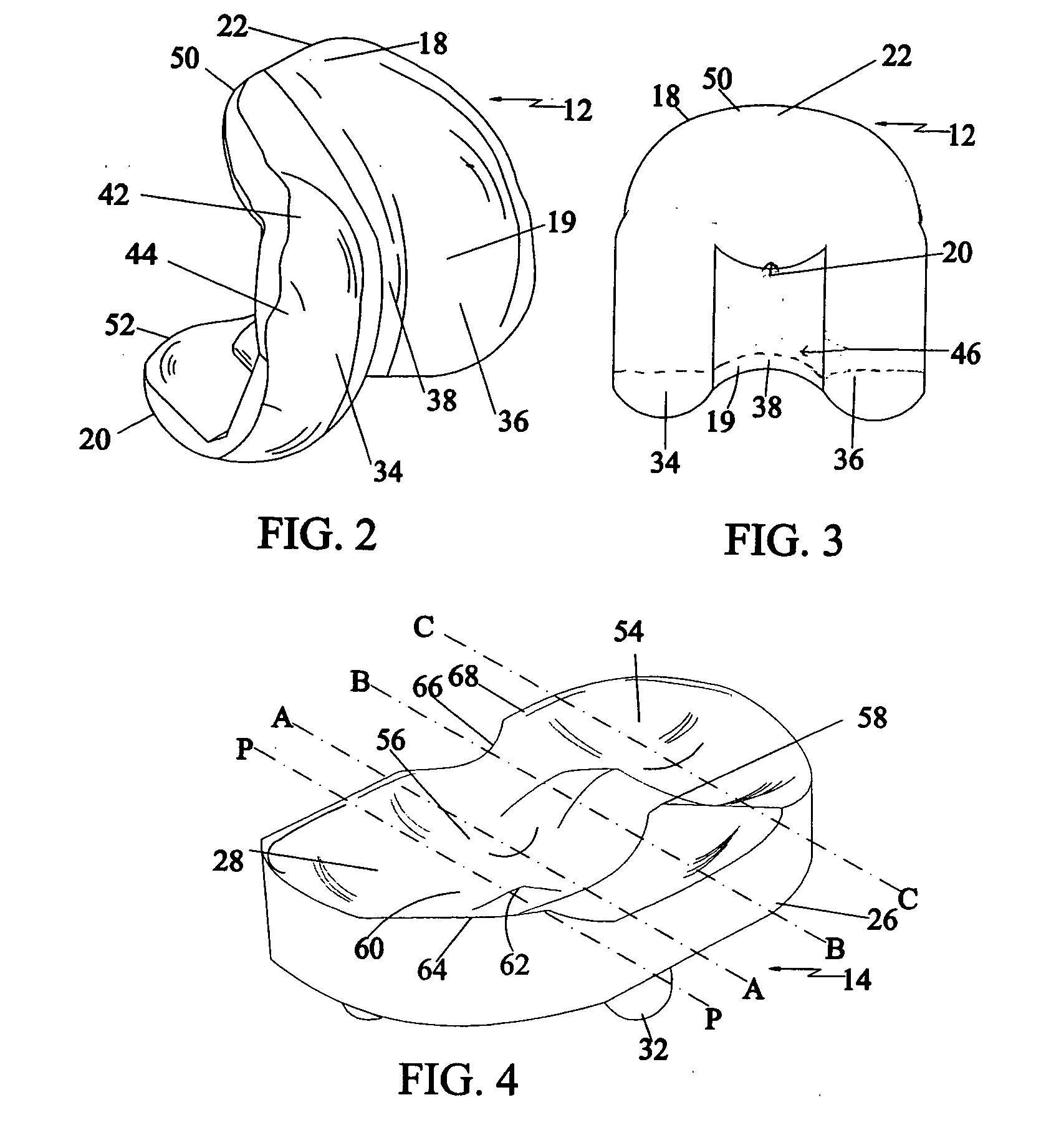Knee joint with a ramp
a technology of ramps and knee joints, applied in knee joints, prostheses, medical science, etc., can solve the problems of reducing affecting the service life of the knee joint, so as to reduce the wear and deformation of the polyethylene surface.
- Summary
- Abstract
- Description
- Claims
- Application Information
AI Technical Summary
Benefits of technology
Problems solved by technology
Method used
Image
Examples
Embodiment Construction
[0027]Referring to FIG. 1, the knee joint 10 in a zero degree flexion in accordance with a preferred embodiment of the present invention is shown. The knee joint 10 of the present invention includes a femoral component 12 and a tibial component 14. Femoral component 12 is preferably connected to a predefined distal end of a femur. The tibial component 14 is preferably connected to a predefined proximal end of a tibia.
[0028]The femoral component 12 is a one-piece arcuate construction that includes a pair of convex femoral condyles 16 and a patella flange 18. Condyles 16 and patella flange 18 converge inwardly to meet in the distal portion 19 of the femoral component 12 to form the arcuate shape. The pair of condyles 16 forms a proximal-posterior portion 20 and the patella flange 18 forms an opposed proximal-anterior portion 22. An interior side of distal portion 19 has a pair of pegs 23. The interior side of the distal portion 19 of femoral component 12 includes approximately central...
PUM
 Login to View More
Login to View More Abstract
Description
Claims
Application Information
 Login to View More
Login to View More - R&D
- Intellectual Property
- Life Sciences
- Materials
- Tech Scout
- Unparalleled Data Quality
- Higher Quality Content
- 60% Fewer Hallucinations
Browse by: Latest US Patents, China's latest patents, Technical Efficacy Thesaurus, Application Domain, Technology Topic, Popular Technical Reports.
© 2025 PatSnap. All rights reserved.Legal|Privacy policy|Modern Slavery Act Transparency Statement|Sitemap|About US| Contact US: help@patsnap.com



